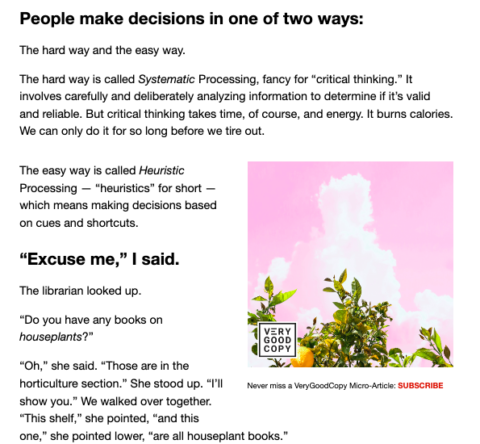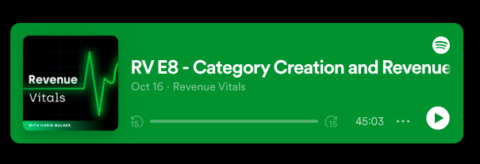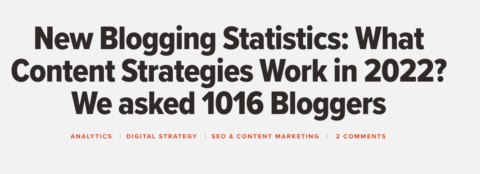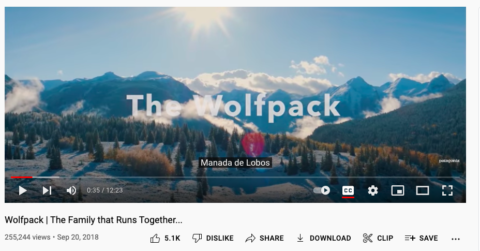Meet Sonya: A content marketer who’s keen on all the latest fads, like snappy tweets and seven-second TikTok videos.
With all that 7-second content consumption, it’s no wonder Sonya is hesitant to start tapping away at 2,000-word blog articles. She thinks to herself, “Is long-form content dead?”
Then, she reaches this very article that you’re reading right now, and just like you, she’s curious.
From my perspective, fluffy and boring long-form content is dead, yes.
But, valuable long-form content that works – that truly stands the test of our ever-decreasing attention spans – is all about creating engagement, not length.
So, how can you create content that engages your audience like a 10-hour Netflix marathon?
Let’s now take a deeper look.
What Is Long-Form Content?
What comes to mind when you think of “long-form content?”
Is it a never-ending blog article? What about a book?
In fact, long-form content is also:
- 40-minute podcast episodes. (Am I the only one who’s binged marketing episodes to get pumped for my day?!)
- 20-minute YouTube tutorials.
- 60-minute webinars.
- Longer carousel posts on Instagram or LinkedIn.
The more you think about it, the more you realize we actually consume a ton of long-form content on a daily basis.
Long-Form Content Vs. Short-Form Content
Let’s tackle the “is long-form content dead?” debate once and for all.
To give you a bit of context into what we’re working with, Microsoft reported that 20 years ago, the average attention span was 12 seconds.
Today, we’re at a whopping 8.25 seconds.
On the other hand, we binge-watch multiple 60-minute episodes of TV shows in one sitting (myself included).
So when you’re in a dilemma about how long to make long-form content, consider these factors:
- It’s more about how well you engage your audience and the value you provide rather than simply making long content.
- The channel you’re creating content for heavily influences the length (for example, a blog article may be the ideal length at 1,500 words because that’s how much space you need to cover the topic, while a book may need 250 pages).
- After analyzing 11.8 million Google search results, Backlinko discovered the average first-page result contains 1,447 words. Considering that Google’s goal is to provide the most helpful results that users prefer, this highlights that users enjoy longer content.
For short-form content:
- Again, the channel influences the length. For instance, especially with email marketing, the message needs to get across immediately, or you’ll decrease the chance of getting attention.
- With social media channels like Twitter or TikTok that have been made with conciseness in mind, character limits force you to keep your message short and sweet.
- Not all landing pages need to be short, it’s more about conveying the important information your audience needs.
According to Peep Laja of CXL:
“Worried that your copy is too long? Don’t. If somebody is ready to buy after just a brief skim (having just read ~20% of the copy), they can just skip ahead and click “Buy.” No problem.
But if somebody reads all the text on your site and still has questions and doubts, then you’ve got a problem. This is why long-form copy works well for sales pages.”
So, while there are certainly times and places where short-form content is a must, long-form content is still alive and well.
How To Write Long-Form Content
Remember Sonya from earlier?
We’ve included Sonya because she’s likely a lot like you: A content marketer that’s struggling to determine how to incorporate long-form content into her marketing strategy.
She creates the story within this article because she’s relatable. As a content marketer myself, I am constantly debating over how long to make content, so I completely understand her dilemma.
So when it comes to your own content, how can you craft a story that brings the whole piece to life?
And how do you successfully incorporate long-form content into your marketing strategy?
Let’s now dig into that.
Step 1: Find Your Content’s Purpose
There’s something I need to make abundantly clear: No matter the length, don’t create content just to create content.
Every content piece needs a specific intention for a specific audience.
So, think about these questions before creating content:
- What problem does this content help my audience solve?
- What type of person would read this article?
- How does this content align with, and support, the rest of my marketing strategy?
- Which channel am I promoting this content on?
Once you’ve got clarity there, what you need within the content becomes much clearer.
Step 2: Create A Story That Drives Engagement
Unfortunately, long-form content has a reputation for being boring, but when it entertains people, they’ll be eager for more.
When in doubt, always remember: If Netflix can create a story like Squid Games, where subscribers have watched over 2.1 billion hours since it was released, then you can create long-form content that keeps your audience glued to the screen, too.
You can do this by creating relevant content that engages people with a story to pull on their emotions and connect with their deepest challenges.
The same goes for B2B because, at the end of the day – you’re still selling to people.
In fact, the hook (the attention grabber) is one of the most important parts of content; so when you can weave in a story throughout, it keeps your audience scrolling until the end.
Step 3: Write Enough To Convey Your Message
The goal with long-form content should never be to “keyword stuff” or write just to fulfill a word count.
The intention should always be to add value, insert fresh ideas, clarify challenging concepts, and ultimately make people’s lives easier.
For example, think about your favorite marketing podcast – even if it’s 60 minutes long, you’re likely eager to continue listening and won’t stop until the very end (even if it takes a couple of days).
If content matters to your readers, they’ll stick to it until it’s finished.
Step 4: Break Up Text With Visuals And A Well-Designed Page
Readers will lose interest almost immediately if you don’t appeal to their needs visually.
Humans like things broken up by bullet points, italics, short sentences, and visual imagery.
Just like when you were in 1st grade learning to read, a whole page of text with no imagery seemed daunting.
The same concept applies today. Often, people like to scroll through the entirety of a blog article to view the main points before consuming the whole thing.
So, by keeping it snappy and well-designed, you’ll increase your chances of them reading the entire blog.
Here’s an example:
Eddie, the owner of VeryGoodCopy, does an exceptional job of keeping his content short, sweet, and to the point:
 Screenshot from VeryGoodCopy, October 2022
Screenshot from VeryGoodCopy, October 2022By adding images, large dialogue, and short sentences, he’s built his subscriber list to over 48,000 marketers.
Last but certainly not least – don’t skimp on the mobile view optimization.
It’s more than likely your readers are tuning in on their phones, and if it’s wonky, they’ll exit immediately.
Step 5: Promote And Repurpose
Now comes the fun part – promotion and repurposing.
The whole point of creating content is for people to read it. So, shout it from the rooftops, and be sure to promote it multiple times across multiple channels.
A great way to do this is to break up the topics within your article into micro-content.
For instance, I could create:
- A carousel post summarizing the points made in this blog article.
- A Twitter thread.
- A short video on LinkedIn.
3 High-Quality Long-Form Content Examples
Most learn by example, so here are a few of my favorites for highly engaging long-form content.
Example 1: Refine Labs’ Podcasts
 Screenshot from Revenue Vitals Podcast, Refine Labs, October 2022
Screenshot from Revenue Vitals Podcast, Refine Labs, October 2022Why it’s so awesome:
- Highly engaging episodes, up to an hour or more.
- Features live commentary from CEO Chris Walker and questions from the audience, which builds a strong community.
- Not focused on selling, but rather informing the audience to truly improve how marketing works
- Repurposed heavily on LinkedIn.
- Educates his audience about methods to truly improve their marketing strategies, regardless of whether or not they ever work with Refine Labs.
Example 2: Orbit Media’s 2022 Blogging Statistics
 Screenshot from Orbit Media, October 2022
Screenshot from Orbit Media, October 2022Why it’s so awesome:
- It compiles real data based on surveys rather than just summarizing other people’s research.
- The surveys are from real people who work on blog articles, so the data is trustworthy.
- It’s updated on a yearly basis, so information is always up to date.
- The helpful visuals with infographics summarize the most important information in an easily readable manner.
- The subject matter expert commentary adds credibility.
- It’s perfect for generating natural backlinks.
Example 3: Patagonia’s Documentary Of The “Wolfpack”
 Wolfpack, Patagonia, September 2018
Wolfpack, Patagonia, September 2018Why it’s so awesome:
- Uses a strong focus on emotion, built directly through real people.
- Builds a story relevant to the brand and typical audience, but doesn’t sell.
- Stays true to Patagonia’s brand mission of helping the environment.
With The Right Strategy, Long-Form Content Can Win
After reading this article, Sonya is now convinced to take a whack at a juicy 1,500 article – so where does that leave you?
If you decide to create long-form content, just remember:
- Ensure you’ve solidified a specific purpose for your content.
- Gather enough information to clearly get your message across.
- Make it valuable & worth your readers’ time.
- Weave in a story.
And don’t forget to promote and repurpose it!
More resources:
- How To Repurpose Long-Form Content Into Supplementary Content
- 8 Elements Of A Successful Content Strategy
- Perfectly Optimized Content From Start To Finish
Featured Image: Inside Creative House/Shutterstock





